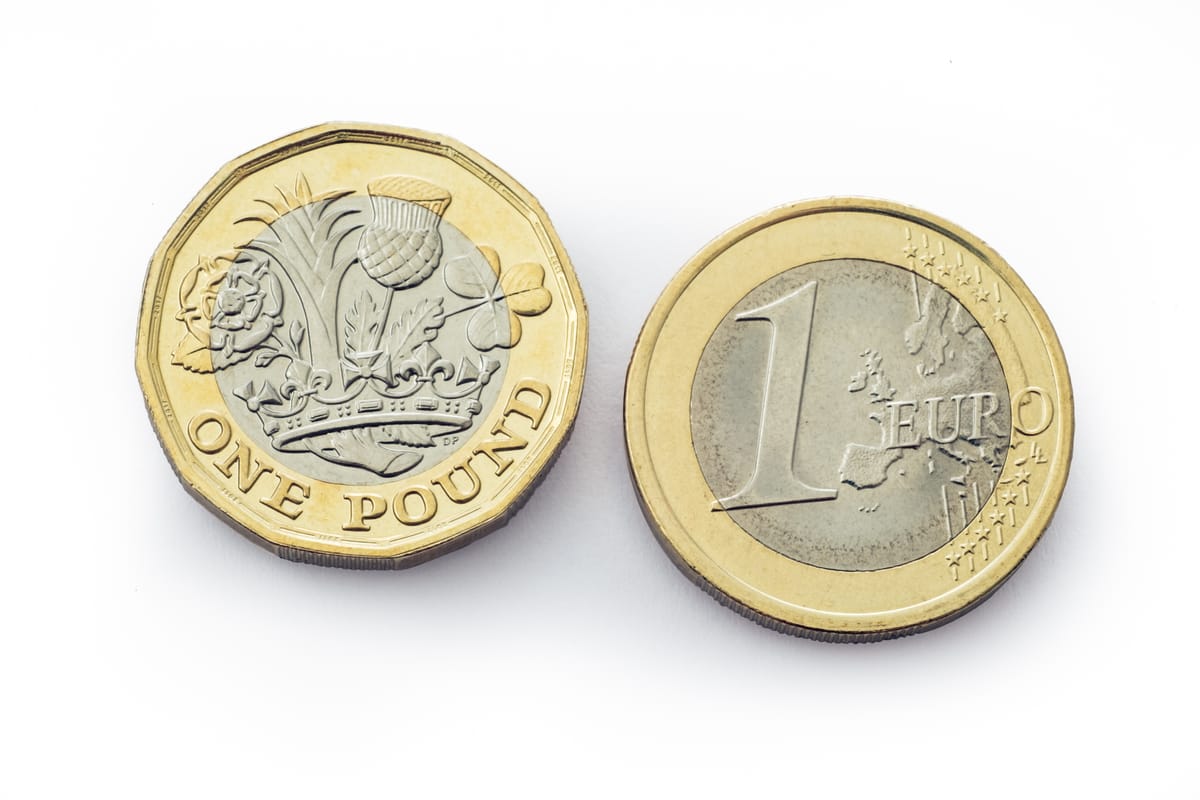GBP/EUR exchange rate June review: pound touches 22-month high versus euro
Political uncertainty in France initially injected strength into the pound euro (GBP/EUR) exchange rate before easing fears of a majority right-wing government caused it to soften.

6 June
The pound euro (GBP/EUR) exchange rate was pressured by the European Central Bank’s (ECB) interest rate decision. Despite trimming rates by 25bps as promised, the central bank reiterated that a data-driven approach to future decisions was needed. It also refused to commit to a clear pathway for future rate cuts, which supported the euro.
7 June
The pair regained a firm footing following the latest US non-farm payrolls report, which showed the US economy smashed expectations for the number of jobs added in May. Signs of a robust US labour market saw the odds for a Fed interest rate cut in July slashed from 20% to around 8%.
The dollar’s subsequent appreciation applied pressure to the single currency due to its negative correlation with the US currency, causing the pound euro rate to recover to around 1.177. Additionally, the potential for expanding monetary policy divergence between the ECB and the Fed and Bank of England (BoE) increased amid revised rate cut bets.
9 June
The pound firmed above 1.18 after euro investors digested French president Emmanuel Macron’s decision to call a snap election against a backdrop of far-right political traction across the EU.
12 June
The pound softened from a 22-month high in the 1.18 mid-range amid a twist in Fed rate cut bets that was prompted by an unexpected drop in US inflation. Investor expectations of a cut this summer subsequently increased causing the dollar to dip, which lifted the euro.
14 June
The pound touched a fresh 22-month high versus the euro a fraction below 1.19 amid political uncertainty in the EU after far-right Eurosceptic parties made gains in the European elections. This dented the single currency in the wake of Emmanuel Macron’s decision to call a snap election in France.
19 June
Having eased from its high, the pound was boosted by the UK Consumer Price Index (CPI). While headline inflation cooled to the BoE’s 2% target in May, signs of sticky services inflation helped the pound arrest some of its losses and climb back into the 1.18 mid-range.
20 June
The BoE’s Monetary Policy Committee voted to hold interest rates at its June meeting, in what the central bank described as a “finely balanced” decision. This, together with cooling inflation, intensified rate cut speculation with traders seeing an increased likelihood for a cut in August, which undermined the pound.
28 June
Having treaded water just above 1.18 for a few days amid downbeat economic data from both sides, the pound edged higher following better-than-forecast UK GDP figures. The upbeat print showed the economy emerged from recession at a faster pace than projected throughout the first quarter.
30 June
The pound euro rate was dealt a blow by the results from the first round of France's legislative election. Support for Marine Le Pen’s far-right National Rally party was weaker than opinion polls indicated, which eased fears of a majority right-wing government. The euro was buoyed by the news, causing the pair to drop to a three-week low below 1.18.
Looking ahead
With no BoE monetary policy meeting scheduled in July, investors in the pound will monitor UK inflation figures for June.
Having delivered on its promise to cut rates in June, the chance of the ECB loosening policy in July is less clear-cut following the central bank’s hawkish forward guidance.
